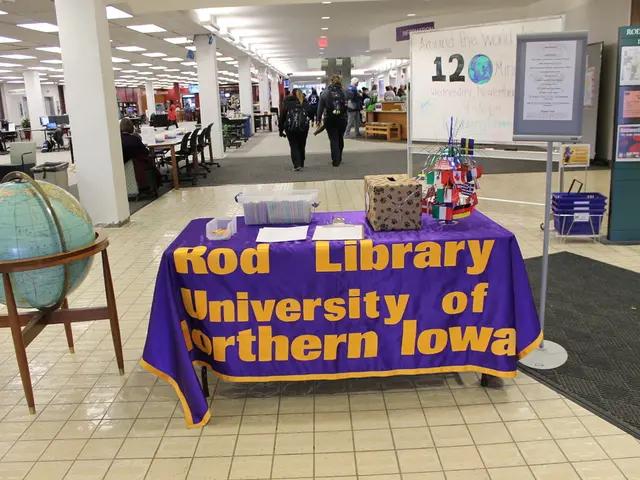Fanatic Devotion of Franz Liszt: The Origin of Adoring Mobs and Intense Adoration
In the 19th century, the renowned Hungarian composer and pianist Franz Liszt ignited a cultural phenomenon dubbed "Lisztomania," turning concert halls into arenas of fervent emotion and ardent devotion. Pioneered by German poet Heinrich Heine, the term encapsulates the feverish enthusiasm and near-obsessive adulation Liszt inspired in his audiences. Preceding rock star stadium packs, Liszt earned a spot in concert halls and salons with enraptured fans who screamed, wept, and craved mementos.
This feature delves into the cultural phenomenon of Lisztomania, with a focus on how Liszt became a global superstar and the societal implications of his unparalleled fame.
Cradle of a Virtuoso
Born in 1811 in Hungary, Franz Liszt was gifted with a prodigious talent from a young age. Nurtured by his musically inclined father, Liszt exhibited his talents publicly to aristocratic audiences by the age of nine. His technical proficiency coupled with his impressive capacity for improvisations propelled him to stardom, even in his child years.
Liszt's exposure to Europe's musical elite, such as Ludwig van Beethoven and Carl Czerny, further polished his artistic finesse. However, it wasn't until his adulthood that Liszt's performances were transformed into extraordinary spectacles that extended beyond music.
A Visionary and Showman
Liszt's allure transcended his extraordinary skill. His striking looks, flowing locks, and theatrical stage presence contributed significantly to his appeal. As he performed, he employed dramatic gestures, intense gaze, and passionate playing, creating an atmosphere that felt almost otherworldly.
Unlike conventional performances, Liszt's concerts were emotionally charged affairs that moved beyond mere music. He often performed from memory, a revolutionary approach at the time, enabling an intimate connection with the audience. His improvisations, filled with dazzling technical feats, imbued a sense of unpredictability and excitement.
The Chaos of Lisztomania
The term "Lisztomania" was no exaggeration. Accounts from the time depict scenes reminiscent of modern-day rock concerts: females fainting in the aisles, fans tearing at his clothes, and collectors salvaging Liszt's discarded gloves, handkerchiefs, and piano strings as cherished keepsakes.
German poet Heinrich Heine penned descriptions of women clamoring for locks of Liszt's hair and fashioning jewelry from his piano strings. Others swooned at the mere sight of him. His popularity soared to such heights that it prompted merchandise sales, including Liszt-themed brooches and lithographs.
Lisztomania symbolized more than mere fanaticism-it was a cultural phenomenon that straddled the line between art and celebrity.
The Sociocultural Shift
Liszt's fame marked a turning point in the artist-audience connection. As a result of his extensive tours and striking communicative abilities, his music reached a broader public for the first time, aligning with the rising middle class seeking to engage in cultural life. Liszt's magnetic charm made him a hero for this new demographic, and his concerts evolved into social gatherings.
Lisztomania also mirrored the Romantic era's emphatic focus on personal expression and the sublime. Liszt was revered as more than just a musician-he was regarded as a genius, a visionary, and a symbol of human potential.
The Psychology of the Enthusiast
What ignited the hysteria surrounding Liszt? Historians and psychologists proposed several theories for this fascination. Freshness of his performances, a unique blend of technical mastery and emotional depth, played a significant role. Liszt's ability to foster a sense of intimacy within large audiences heightened his appeal.
Furthermore, the Romantic ideal of the tortured artist resonated with audiences. Liszt's complex personality, combining brilliance and melancholy, captivated interest.
From a contemporary viewpoint, Lisztomania can be seen as the precursor to today's celebrity culture. Liszt carefully crafted his image, guaranteeing his fame endured through commissioned portraits and extensive writing.
The Innovator
Beyond his public allure, Liszt was a transformative force in music. He revolutionized piano technique, forcing the instrument to its extremes with compositions challenging even the most accomplished pianists. Works such as the Transcendental Études and Hungarian Rhapsodies showcase his technical prowess and creative use of harmony and form.
Liszt introduced the solo piano recital, a groundbreaking format that put the performer at the center instead of an ensemble participant. His avant-garde approach laid the foundation for the modern concert experience.
Feedback from Critics
Not everyone was engrossed by Lisztomania. Critics of the time accused Liszt of catering to the crowd and disregarding artistic integrity for showmanship. Despite this, Liszt was passionately committed to his craft. He balanced his flamboyant performances with serious compositional work, producing symphonic poems and sacred music. His diverse portfolio underscores the depth of his musical contributions.
The Lasting Legacy of Lisztomania
Lisztomania laid the groundwork for modern celebrity culture in classical music. Liszt's charisma and groundbreaking technique reshaped the concert experience, leaving an enduring legacy that continues to inspire musicians and captivate audiences.
More significantly, Lisztomania democratized classical music, making it accessible to the masses. Liszt's passionate performances paved the way for classical musicians to engage with broader audiences, ensuring the relevance and longevity of classical music culture.
- The enthusiasm and adulation towards Franz Liszt, as reflected in the term 'Lisztomania', could be observed in today's social-media era, with fans of celebrities, musicians, and trending pop-culture figures showing a similar level of fervor and near-obsessive devotion.
- Liszt's transformative impact on the concert experience transcended the 19th century, influencing the modern entertainment industry by incorporating elements of showmanship, charisma, and intimate audience connection - key aspects of today's concert spectacles, reunions, and live performances on social media platforms.
- As a prodigious virtuoso, unique cultural icon, and influential figure in classical music, Franz Liszt's career and legacy have intertwined with the broader realm of pop-culture, echoing the popularity and societal impact of contemporary celebrities in various fields, including music, books, and visual arts.







